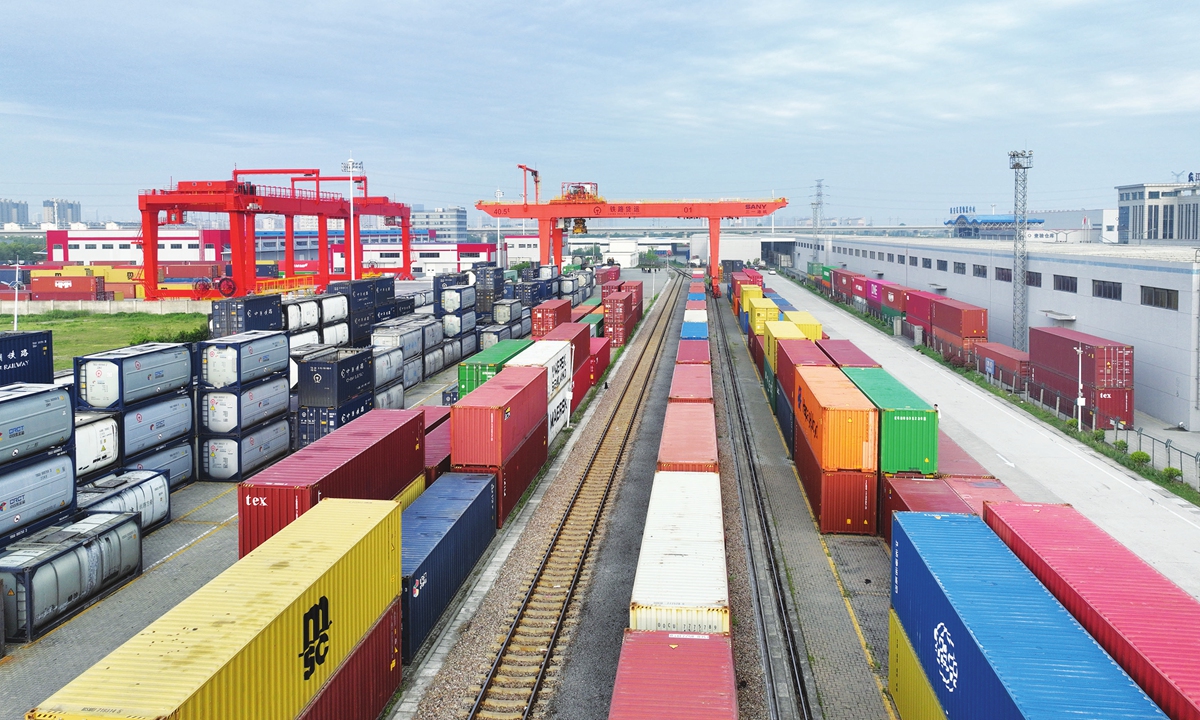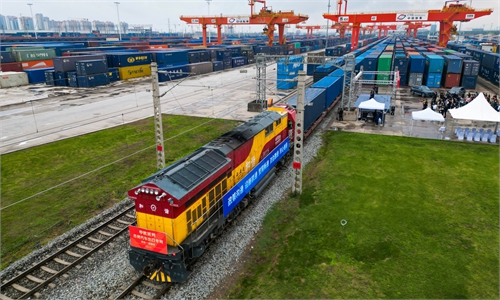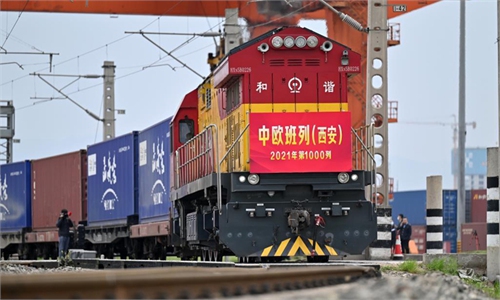Express freight rail service connects China, Europe and ASEAN, bolstering many countries’ growth

The first China-Laos freight train specially arranged for the transportation of fertilizer with 70 TEUs departs from Nanjing in East China's Jiangsu Province to Luang Prabang, Laos, on April 25, 2023. Photo: cnsphoto
The first freight train carrying Russian goods left Mohan railway station in the Chinese border county of Mengla, Southwest China's Yunnan Province, on Sunday bound for Laos. The freight trip marks a milestone for efficient rail freight transportation connecting Europe and ASEAN through China.
The train carried 32 cargo boxes of non-metallic mineral ores from Russia bound for Vientiane South station in Laos, where the goods will be transferred to a meter-gauge railway train and setting out for its final destination in Bangkok, Thailand.
The full train run takes about 22 days, reducing shipment time by about 20 days, marking significant progress compared to the traditional ocean freight, according to thepaper.cn.
And, on the same day, a freight train loaded with Lao corn entered China via Mohan railway station, marking a new route for Lao food exports. Compared with existing transportation links which travel through Thailand, the China-Laos Railway saves about two days of transportation time and reduces cost by 20 percent, according to thepaper.cn.
China is becoming a hub connecting Southeast Asia and Europe through the China-Europe Railway Express and the China-Laos Railway, which play a role in securing the flow of commodities and facilitating trade between many countries.
The China-Laos Railway started operation on December 3, 2021. As of this Sunday, two years after its inauguration, the rail link had completed 24.2 million passenger trips and transported more than 29.1 million tons of cargo, of which cross-border cargo exceeded 6 million tons, according to China Railway Group Co.
The China-Europe Railway Express has also made amazing achievements after a decade of development. As of September 15, the route has completed 77,000 trips, transporting more than 7,310,000 TEUs of goods, valued at more than $340 billion, according to the National Development and Reform Commission under China's State Council. The freight train has reaches 217 cities in 25 countries in Europe, and become an important bridge for international economic and trade cooperation.



